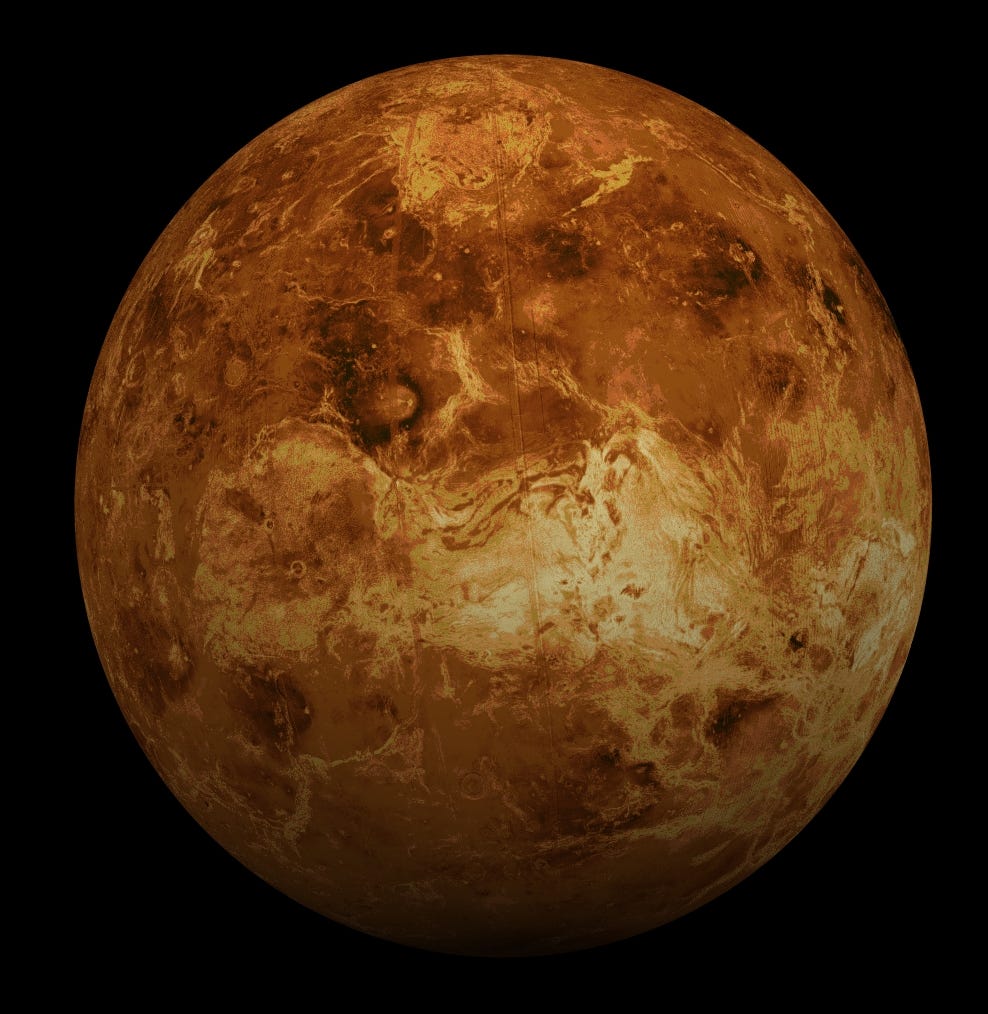What the Soviet Union Really Found on Venus: Life or a Mistake?

Soviet Venus Exploration Program
For 30 years (1961–1984), the Soviet Union focused on exploring Venus with a series of space missions. Although many missions failed miserably, they continued to try and improve. Venus, the closest planet to Earth, has a harsh surface with temperatures hot enough to melt lead and atmospheric pressure that crushes most instruments.
#### **Milestones in the Venera program:**
1. **The Beginning (1961–1967):**
– **Venera 1 (1961):** The first mission lost contact after 7 days.
– **Venera 3 (1965):** Became the first man-made object to collide with another planet without sending back any data.
– **Venera 4 (1967):** First successful data return from the Venusian atmosphere, showing pressures 90 times higher than Earth’s and an atmosphere dominated by CO₂ with clouds of sulfuric acid.
2. **Big Success (1970):**
– **Venera 7:** Successfully landed on the surface of Venus, transmitted data for 23 minutes, confirmed surface temperatures exceeding 900°F and crushing pressure.
3. **First Images (1975):**
– **Venera 9 & 10:** Sent back the first images of the Venusian surface, showing a barren world, full of sharp rocks and dim light due to the dense atmosphere.
4. **Technology’s Peak (1982):**
– **Venera 13 & 14:** Sent data for over 2 hours before being crushed by pressure. The color images showed an eerie glow with reddish-orange hues. Venera 13 also recorded the sound of Venusian winds for the first time in history.
5. **Sky Exploration (1984):**
– **Vega 1 & 2:** Dropped balloons into the Venusian atmosphere, collecting data on chemical composition and winds for several days.
Although the program ended in 1989 after the collapse of the Soviet Union, these missions provided a profound understanding of Venus – a harsh and alien planet. The Soviet spirit of determination paved the way for humanity to explore other planets. However, Venus still has many mysteries to solve in the future.

**Missions to Explore Venus and Mars: Progress and Prospects**
Scientists at Northeastern University have proposed a mission called *Valhalla*, inspired by Norse mythology, to explore Venus. The crew would not directly touch the surface but monitor the mission from orbit. In the first phase, unmanned aerial vehicles called *Ravens* would probe the area, looking for a safe landing site for future missions. Then, another group of drones, called *Wolves*, would collect data from the surface and atmosphere for several hours before being destroyed by the planet’s harsh environment. With only a 10-second signal delay, humans on board could respond quickly if there was a problem.
Although Venus’ current environment is harsh, recent research suggests that the planet once had ideal conditions for habitability, with an Earth-like climate and liquid water oceans that lasted for 2 billion years. To answer these unanswered questions, NASA has planned a *Da Vinci* mission in 2029, which will study the planet’s atmosphere and surface, as well as signs of past oceans. This will be followed by a *Veritas* mission in 2031, which will focus on mapping the geology, volcanic activity, and surface structure of Venus.
The European Space Agency (ESA) also plans to launch the *EnVision* probe in the 2030s to analyze volcanic gases and the planet’s interior. Meanwhile, the first private mission to Venus could come in 2025, with the goal of exploring the viability of life in the planet’s atmosphere.
**Venus Habitability and Terraforming: Bold Ideas**
Venus, with its proximity and similar gravity to Earth, has the potential to become a second home for humans. To transform the planet, scientists have proposed cooling the atmosphere and reducing CO₂ by bringing water from comets or hydrogen from Jupiter to create chemical reactions. Another idea is to build floating cities in the atmosphere about 50 km above the surface – where the pressure and temperature conditions are similar to Earth.
—
**Exploring Mars: Dreaming of a city on the red planet**
Elon Musk and SpaceX are leading the effort to send humans to Mars, with plans to begin colonization by 2029. Mars has many challenges such as a cold surface of -60°C, strong cosmic radiation, and toxic air. However, modern technology promises to overcome these obstacles. SpaceX plans to use the *Starship* to carry 100-200 people on a 7-month journey, build housing using robots and 3D printing, and create fuel on site from water ice and CO₂.
**Considering Other Planets: From the Moon to Mercury**
The Moon, though small and resource-poor, has already been tested for growing plants in lunar soil. Meanwhile, Mercury, with temperatures reaching 427°C, could be exploited thanks to its underground lava caves. However, the low gravity on these planets remains a major problem for the human body.
**Conclusion: The Journey to Find a New Home**
Venus and Mars, while each has its own challenges, offer hope that humans can settle on other planets. Space exploration efforts will not only ensure survival but also usher in an era of space resource exploitation, with historic missions starting in the next decade.








